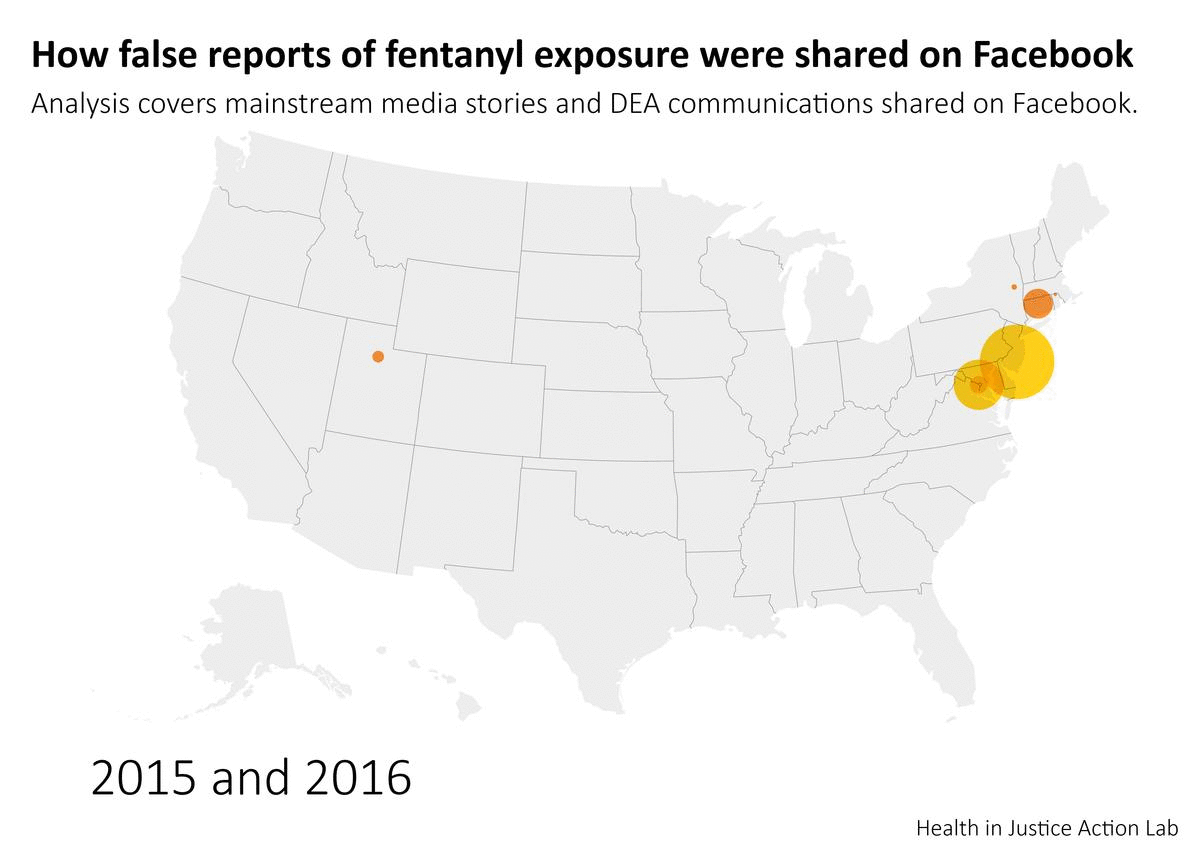"Police officer overdoses after touching fentanyl"
The Tired Narrative:
There have been numerous unconfirmed reports of first responders (mainly police officers) "overdosing" at the scenes of drug busts and routine traffic stops. After minor contact with unknown powdered substances, such as brushing some powder off a uniform, the officer exhibits symptoms such as fainting and shortness of breath.
Nearby officers then administer doses of naloxone. "Saved by naloxone," the officer eventually wakes up.

Other news reports suggest that officers are exposed to illicit fentanyl "dust particles" via inhalation. Whether outdoors or in a confined room where drugs had been stored, officers report feeling dizzy and disoriented, then typically they faint. Media reports speculate that illicit fentanyl has somehow become concentrated in the air. Officers are then administered naloxone, after which they eventually wake up.



The Informed Narrative:
A statement by the American College of Medical Toxicology says that illicit fentanyl is unlikely to cause toxicity via skin exposure. The Centers for Disease Control and Prevention as well as the Office of National Drug Control Policy have put out similar statements.
Reporters must remain skeptical about claims of accidental fentanyl exposure. Journalists should request incident reports, toxicology reports, and any other public records that provide evidence of the official narrative.
While the experience of police officers and first responders is important, what they say happened should not be reported as a fact. As with any news story, evidence must be provided.
WHY?
Several reports claim that police officers and first responders are accidentally exposed to illicit fentanyl (by touching powder) at the scene of drug busts and overdoses. These drugs are not skin-soluble and cannot be absorbed in toxic doses via dermal exposure. If first responders fear "exposure," they might delay rescue breathing and other lifesaving interventions during an overdose.
Social Media Analysis of Uninformed Narratives
With an appearance of glaringly uninformed narratives, we assessed the extent of misinformation regarding the risk of overdose by casual fentanyl exposure among 551 national, state-based and local news articles. Our assessment included its diffusion and excess visibility in relative mainstream and social media channels. The 551 misinformed news articles spanning 48 states received at least 450,111 Facebook shares and potentially reached nearly 70 million users between 2015 and 2019.
Methods
Between May and December 2019, we utilized the Media Cloud information system to compile a dataset of mainstream media content related to the overdose crisis. Within this larger database, we queried nine search terms specific to casual fentanyl exposure, enhanced by boolean and wildcard operators. Using Media Cloud's social media capabilities, we quantified the number of Facebook shares for each article. The top 10 shared media articles were coded by state of publication and incident, type of contact reported, reference to other incidents, and reference to official guidance. To model engagement and information reach, Facebook shares were multiplied by an average user's contacts.
Results
Uninformed v. Corrective New Articles Timeline
The number of new articles with uninformed narratives far surpassed corrective narratives, intermittently peaking between May 2017 and 2019. The number of Facebook shares for both narrative types demonstrated a similar trend.
Articles with corrective content were further categorized as partially or completely corrective. Partially corrective articles presented both misinformation and corrective content, while completely corrective articles unequivocally refuted claims of risks of fentanyl contact overdose.
Top 5 Facebook Shared Stories
By observing news articles with the highest number of Facebook shares, five prominent stories emerge. The following maps depict the location of each reporting news outlet for each story while the size of the dot represents the number of Facebook shares per article.

Connect with Expert Sources:
Kevin Shanks, toxicologist
Ryan Marino, Emergency Medicine - Case Western Reserve University Medical School
